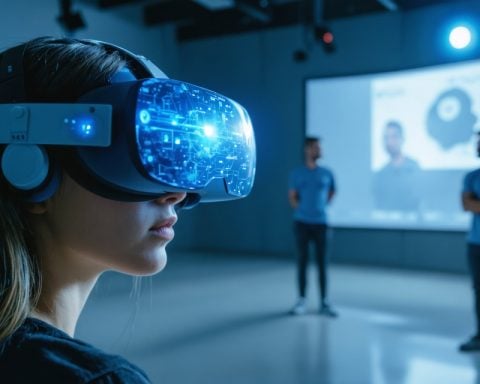Advanced Technology to Combat Urban Encroachment
In a groundbreaking initiative, the National Remote Sensing Centre (NRSC) is set to revolutionize how Hyderabad manages its water bodies. The city’s Disaster Response and Asset Protection Agency (HYDRAA) is leaning on high-resolution satellite imagery to assess and tackle the pressing issue of encroachments impacting vital urban infrastructure.
During a recent visit to the NRSC office in Balanagar, the HYDRAA commissioner, AV Ranganath, emphasized the significance of satellite data in fortifying the city’s water management strategies. Until now, HYDRAA has relied on data from the Survey of India and Telangana survey records, but integrating satellite imagery will enhance the precision of their assessments.
The agency aims to outline crucial metrics such as the full tank level (FTL) and the buffer zones surrounding water bodies. This data will be pivotal in understanding the long-term impact of recorded heavy rainfall patterns from 1973 to 2024. By harnessing satellite technology, HYDRAA hopes to play a significant role in preserving Hyderabad’s natural resources.
Additionally, Ranganath urged the NRSC to engage actively in conservation efforts for the city’s water bodies, ensuring a sustainable approach to managing these vital resources. This collaborative effort showcases an innovative step forward in protecting Hyderabad’s environment through advanced technology.
Revolutionizing Urban Water Management: Hyderabad’s High-Tech Solution to Encroachment
Hyderabad is on the cusp of a significant transformation in its approach to managing urban water bodies, driven by a revolutionary collaboration with the National Remote Sensing Centre (NRSC). This initiative highlights a shift towards utilizing high-resolution satellite imagery to effectively monitor and address the issue of encroachment affecting crucial urban infrastructure.
Importance of Satellite Imagery
The Disaster Response and Asset Protection Agency (HYDRAA) of Hyderabad is now incorporating advanced satellite data into their strategies for water management. According to HYDRAA Commissioner AV Ranganath, this move aims to significantly enhance data accuracy. Previously, the agency primarily relied on land surveys conducted by the Survey of India and local state records. The switch to satellite imagery is expected to represent a quantum leap in data precision and relevance.
Key Metrics and Historical Data Analysis
One of the core objectives of this initiative is to establish essential metrics, including the Full Tank Level (FTL) and buffer zones around water bodies. This information will be crucial not only for immediate assessments but also for evaluating the long-term effects of rainfall patterns observed from 1973 to 2024. By analyzing historical data alongside real-time satellite information, HYDRAA can gain a comprehensive understanding of water body dynamics and the impact of urban encroachment.
Conservation and Sustainability Efforts
Ranganath has also called for active engagement from the NRSC in conservation efforts related to Hyderabad’s water bodies. This suggests a forward-thinking approach aimed at not only managing these resources but also ensuring their sustainability for future generations. Remote sensing technology is expected to play a vital role in monitoring the health and integrity of these ecosystems, facilitating prompt action against illegal encroachments.
Pros and Cons of Satellite-Based Water Management
Pros:
– Enhanced Accuracy: Satellite imagery provides high-resolution data that improves environmental assessments.
– Long-term Monitoring: Historical data allows for a comprehensive understanding of trends and changes in water levels.
– Proactive Management: Early detection of encroachments helps in taking timely action.
Cons:
– High Initial Costs: Implementing satellite monitoring systems may require significant investment.
– Data Overload: The vast amounts of data generated can be overwhelming without proper analytical tools.
– Dependency on Technology: Over-reliance on satellite data could lead to neglecting ground-level investigations.
Future Trends and Innovations
As urban areas continue to expand, the need for innovative solutions to manage natural resources will grow. The integration of satellite technology in urban planning will likely become more prevalent across various cities, not just in India. This trend suggests a broader movement towards smart cities that prioritize sustainability and environmental protection.
Conclusion
In conclusion, Hyderabad’s collaboration with the NRSC marks a pioneering step in urban water management. By leveraging cutting-edge satellite technology, the city aims to safeguard its water bodies from encroachment and enhance resource sustainability. This initiative is expected to set a benchmark for other metropolitan areas grappling with similar challenges.
For more information, visit the National Remote Sensing Centre.



















